Vegetable leather grown in a laboratory is the future of fashion
by: Ecofriend, 2012-06-07 14:45:21 UTC
Asmita Prasad:
The demand for organic clothing has been rising steadily over the years though cotton-based clothes continue to dominate the green fashion landscape outrunning worthy rivals like jute and bamboo-based fabrics. However, a new project by University of the Arts London-based Senior Research Fellow Suzanne Lee could easily change everything we know about producing fabrics so far. Lee wrote a book called Fashioning the Future: Tomorrow’s Wardrobe that essentially explored the future of fashion and textile technologies and the idea to engineer a synthetic biological textile that can be used to make clothes with the carbon footprint generated in the process being only a trace of what traditional cloth manufacturing processes generate. The research project is being fine tuned by Lee and her team at a UK company called BioCouture.

BioCouture: Vegetable Leather for the future
Lee used a symbiotic culture of yeast and bacteria called kombucha to create a bacterial-cellulose fabric that can best be described as vegetable leather. By mixing sugar with a green tea solution in a large bathtub and adding a hint of yeast to it, Lee obtains a compact leather-like layer of material that can be used as fabric to make clothes. As an alternative to cotton, this bacterial-cellulose fabric is ecologically refreshing since the production of cotton alone requires 210,000 billion liters of water annually with a few billion liters of water and significant amounts of energy also being used in the process of converting the harvested cotton to thread, from thread to woven fabric, in the process of dying and chemical treatments as well as in the process of maintaining cotton clothes once the buyer has purchased it.
Not only does the ‘BioCouture’ fabric bypass the water and energy guzzling manufacturing process, it also allows the fabric to remain 100 percent natural, completely non-toxic and also entirely compostable. The BioCouture fabric also uses a fraction of the water in the dying process and Lee uses natural stains from fruits and vegetables like beetroot and blueberries to create colored fabrics with various designs and patterns. Suzanne Lee showcased the ‘BioCouture’ project during the 2011 London Design Week with a workshop at 100% Design’s 100% materials stand.

BioCouture: Lab Grown Vegetable Leather
The only hurdle that the BioCouture fabric faces at this point in its development is the fact that it absorbs moisture too quickly and breaks down easily. To prevent the fabric from turning into jelly when exposed to water, water-repelling molecules would need to be introduced into the fabric manufacturing process at some point. As a fabric for the future, once it is water resistant enough, BioCouture could be used for fashioning building, cars, magazines, books, clothes, tents and almost anything and everything that uses fabric with an almost marginal carbon footprint in the manufacturing process and even lesser waste being created during the disposal of unusable fabric.
Via: BBC


 TED: John Hodgman: Design, explained. - John Hodgman (2012)
TED: John Hodgman: Design, explained. - John Hodgman (2012)
by: TEDTalks (video), 2012-06-08 15:56:50 UTC
John Hodgman, comedian and resident expert, "explains" the design of three iconic modern objects. (From The Design Studio session at TED2012, guest-curated by Chee Pearlman and David Rockwell.)
 Flat Pack Fabric Bookcase Stores Books Like Clothes
Flat Pack Fabric Bookcase Stores Books Like Clothes
by: TreeHugger Design, 2012-06-08 12:00:00 UTC

A new, textile take on an old favorite: using modular units to (literally) hang books, this fabric bookcase is easily expandable and assembled.
BraunPrize 2012 Achieves Record Breaking Entries
by: Core77, 2012-06-06 17:00:00 UTC


Congratulations to our friends at the BraunPrize—in it's 18th year, the competition seeking "genius design for a better everyday" has received a record-breaking number of entries. Almost 2,400 entries from 73 countries were submitted for consideration. For the first time in the BraunPrize's history, the competition was open to design professionals, enthusiasts as well as design students. The expanded audience is part of Braun's mission "to make industrial design more widely accessible." To support that mission, Core77 and Braun challenged our readers to find Design in the Wild—a photo challenge identifying genius design for a better every day in categories like eat, work, play, relax.
This year's BraunPrize also established a new Sustainability Award recognizing design projects with a strong focus on sustainable solutions. National Awards were also added to increase awareness across local design communities.
 Top, L to R: Naoto Fukasawa, Jane Fulton Suri, Anne Bergner; Bottom, L to R: Oliver Grabes, Dirk Freund (Director of Braun R&D)
Top, L to R: Naoto Fukasawa, Jane Fulton Suri, Anne Bergner; Bottom, L to R: Oliver Grabes, Dirk Freund (Director of Braun R&D)
The BraunPrize jury—consisting of Professor Oliver Grabes as jury chairman and Head of Design at Braun, Dr. Dirk Freund as Head of R&D at Braun, and the globally renowned design experts Naoto Fukasawa, Jane Fulton Suri and Professor Anne Bergner—also had to decide on the global Sustainability Award winner as well as the respective national award winners. We look forward to recognizing the winners of this year's BraunPrize 2012 this year at the BraunPrize Ceremony taking place September 26, 2012 in Kronberg, Germany.
(more...)


 The Nesting, Stacking and Flattening Designs of Christian Desile
The Nesting, Stacking and Flattening Designs of Christian Desile
by: Core77, 2012-06-07 08:00:00 UTC

Fascinated with geometry, the French visual artist and photographer Christian Desile eventually began creating furniture. His Desile chair, above, caused quite the stir at Paris' 2009 Maison & Objet show; the designer seemingly came out of nowhere to win the Coup de Coeur award. The bamboo version above is intended for indoor use, whereas the outdoor version below is produced from recycled PET plastic, and is itself 100% recycleable.

Since then press on the man has been quiet, but a look at his book reveals Desile has a lot more in him than just one chair.
The chair's cousin, the Desile table, folds flat and can be cut from a single piece:

His Liegere stacking stools recall an old-school phone dial:

(more...)


 maarten baas: just about now sand timer for laikingland
maarten baas: just about now sand timer for laikingland
by: Designboom - Weblog, 2012-06-07 11:40:00 UTC
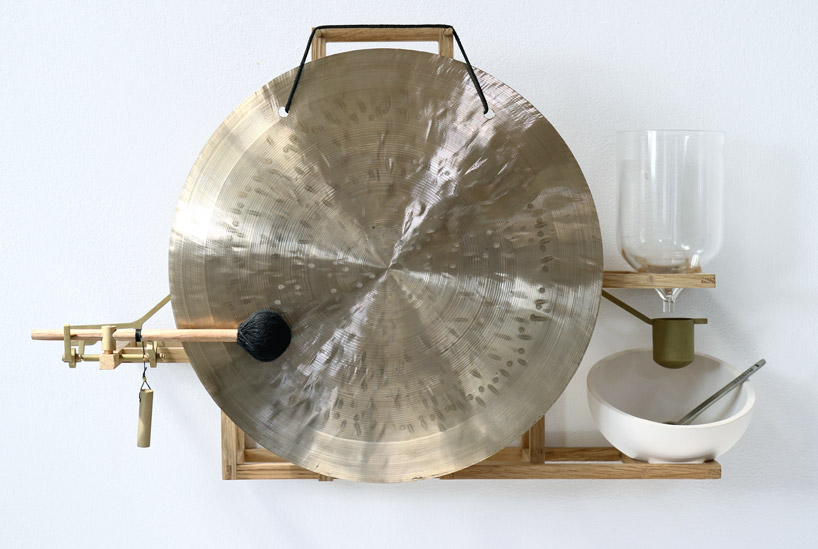
a sand timer that indicates the passing of time with the sounding of a gong.
read more
‘Intelligent Efficiency’ Could Cut US Energy Use 22%, ACEEE Says
by: Environmental Leader, 2012-06-07 14:05:04 UTC

The US could reduce its energy use by up to 22 percent by using a systems-based approach to increase efficiency, according to a report by the American Council for an Energy-Efficient Economy (ACEEE). The nonprofit calls this approach “intelligent efficiency,” and says the key to understanding it is to stop thinking about energy efficiency in [...]
 Fox News In Shock: Composting Toilets Don't Smell
Fox News In Shock: Composting Toilets Don't Smell
by: TreeHugger Design, 2012-06-07 06:51:00 UTC

TreeHugger isn't the only place to sing the virtues of the modern composting toilet. But Fox News? Really?
Bio-Customized Sneakers by Rayfish
by: Dezeen, 2012-06-05 23:01:46 UTC
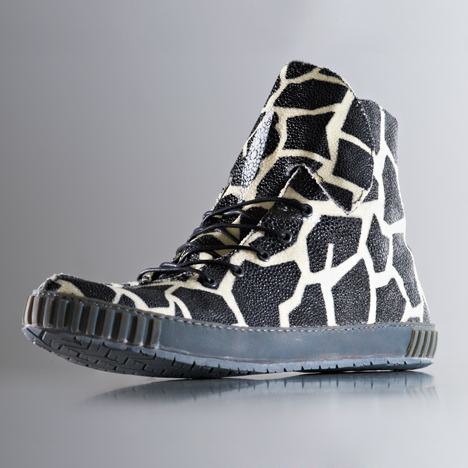
A footwear company in Thailand says it has developed a way to bio-engineer stingray skin to produce customised trainers – although the claim has been met with scepticism from scientists and outrage from animal rights campaigners. (more…)


 How LEED Delay Impacts LEED for Homes
How LEED Delay Impacts LEED for Homes
by: Jetson Green, 2012-06-06 16:55:46 UTC

The process to adopt the next version of LEED has been pushed back according to an announcement by USGBC President and CEO S. Richard Fedrizzi earlier this week. The change means LEED 2012 (now being called LEED v4) will likely not be brought up for a vote on adoption until the middle of next year.
The new standard has already been through four comment periods, with the credit language and the manner in which credits would be evaluated under discussion. There have been revisions in each of these comment periods. A fifth comment period is now scheduled for this fall (October 2 – December 10) and the actual balloting on adoption of LEED v4 is expected to begin June 1, 2013.
USGBC also confirmed to Jetson Green that LEED-H (the LEED system for homes) will “continue to follow the same delivery schedule as the commercial rating systems,” so changes to the residential program are likewise pushed back.
To put this in perspective, it should be noted that green building is not a fixed, absolute concept. To stay at the forefront of the industry, a building built today must do more than one built a decade ago. For this reason, LEED has always been an evolving system. Like software, LEED has continued to change and upgrade periodically. LEED has gone from an initial version 1.0 to a version 2, which went through a couple of revisions (version 2.1 and 2.2) before the last significant change (version 3, which came to be called LEED 2009). The desire of USGBC was to put it on a cycle of continuous revision and improvement, much like the building codes, which are revised and re-issued every three years.
LEED is also experiencing growing pains as the industry has struggled to adopt the many requirements the system requires.
Fedrizzi said, “As we’ve gone through public comment on LEED 2012, and engaged in hundreds of discussions with our members, the LEED community and numerous other stakeholders, we have heard repeatedly that while our community continues to fully embrace our mission, they need more time to absorb the changes we’re proposing and to get their businesses ready to take the step with us. Most importantly, they want more visibility into the infrastructural improvements we’ve promised with the LEED 2012 program — forms, documentation, education, and LEED Online – to inform their internal adoption strategies.”
[+] More about the USGBC’s announcement of LEED v4.
Related Articles on JetsonGreen.com:
- Affordable LEED Homes Open in San Jose
- LEED Retains Status Quo of FSC Only
- Nine Luxuriate LEED Homes in California



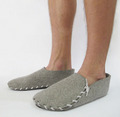

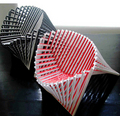
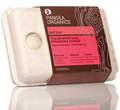


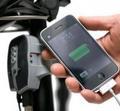
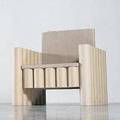
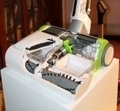
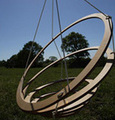
Comments by our Users
Be the first to write a comment for this item.